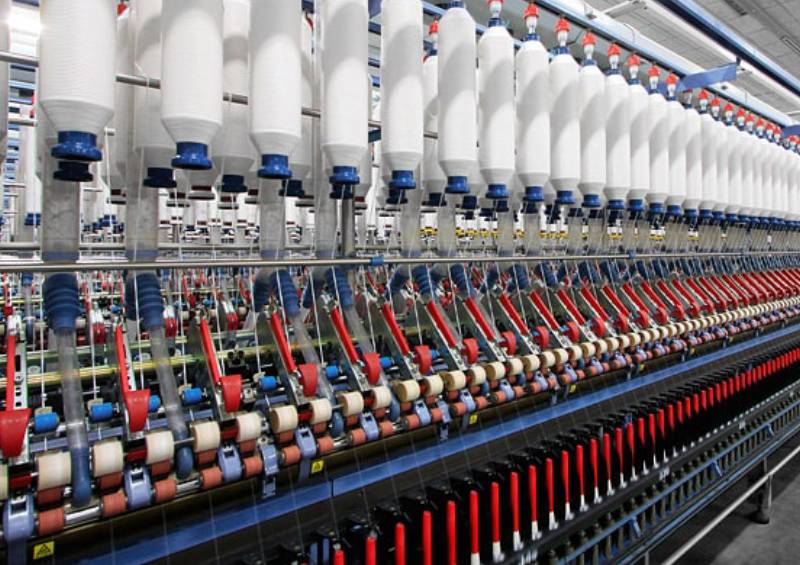Indian Textile Industry Trends For 2024 & Beyond


Pratik Gadia
The textile industry has been an integral part of human civilisation, catering to one of our basic needs – clothing. It is the place where art, technology and commerce intersect to create fabrics that clothe us and furnish our homes, along with myriad other uses we don’t even realise.
In recent years, the textile market in India has seen remarkable growth and a surge in creative innovation. As per reports, the Indian textile industry reached a noteworthy achievement by setting a record for its July 2023 exports, totaling an impressive 127.6 million kilogrammes of spun yarn. This marked an astonishing 108.4% increase from the same month in the previous year and a 56.7% rise from June 2023. This growth is expected to continue in the coming years, driven by increasing consumer demand for natural as well as manmade fabrics, both domestically and internationally.
As we look forward to 2024, let’s explore the revolutionary trends shaping the textile industry.
1. Emphasis On Sustainability
The textile industry in India is experiencing a noticeable surge in the demand for sustainability. It is no longer limited to using organic cotton or providing better working conditions; sustainability has become a multifaceted priority. Due to this, some companies are redefining their entire value chain, from sourcing raw materials to production, supply chain management and waste recycling, as they transition from a linear to a circular operational model. This holistic approach addresses both pre- and post-consumer waste, making sustainability a cornerstone of the Indian textile industry’s future.
2. Increasing Focus On Technical Textiles
The technical textile sector specialises in producing advanced fabrics by employing cutting-edge technology on natural and synthetic fibres. This industry prioritises materials with heightened durability, exceptional insulation and enhanced heat resistance. Innovative fabrics like Nomex, Kevlar and Spandex have diverse applications in healthcare, automotive, construction, security and other sectors. Soon, the demand for technical textiles is expected to soar, particularly in medical, eco-friendly, industrial, sports, healthcare, automotive and housing applications, thereby significantly influencing the textile industry’s trajectory.
3. Increasing Demand For Man-made Fibres
India stands as the world’s second-largest producer of man-made fibres. These fibres contribute to nearly 100% of non-cotton and blended fabrics, offering versatility and cost-efficiency. Currently, the country produces a staggering 1,441 million kilogrammes of synthetic fibres and over 3,000 million kilogrammes of synthetic filaments. Man-made fibres, such as viscose and polyester, have proven to be flexible, durable and capable of withstanding high-speed machinery. Their hydrophobic properties open doors to multiple applications. Consequently, man-made fibres have become a vital pillar of India’s textile industry, providing the sector with the agility to adapt to changing market dynamics.
4. Growing Need for Yarn Quality
Quality now tops price in importance for today’s consumers. In garment manufacturing, it spans processes and products, encompassing attributes like durability, aesthetics, functionality and adherence to standards. Manufacturers are vital in meeting these requirements, as consumers prioritize value and reliability. Quality remains central in the garment manufacturing industry.
5. Demand For Natural Fibres
In an increasingly eco-conscious world, the textile industry is witnessing a rising appetite for natural fibres. These fibres, including cotton, silk, linen, wool, jute and cashmere are at the core of the Indian textiles industry, which is poised to grow from its current valuation of $138 billion to a projected $195 billion by 2025. Notably, these natural fibres are celebrated for their eco-friendly attributes, characterised by a unique blend of lightweight durability. China, India and the United States are at the forefront of this trend, promoting natural fibres to sustain the growth of the global textile industry. As the demand for sustainable fashion continues to rise, natural fibres are expected to remain at the forefront of the industry.
6. Rise In Digital Textile Printing
Digital textile printing, an inkjet-based technique, revolutionizes the textile industry by efficiently applying colorants to fabrics. Its adoption, particularly with dye sublimation printing, has surged in recent times and is poised for continued growth as technology evolves. This innovative approach empowers designers and manufacturers to unleash their creative potential, reduce waste and meet the demands of a rapidly changing market, while maintaining vibrant and high-quality textile designs.
Key Takeaways
The textile industry’s outlook for 2024 and beyond is characterised by a strong emphasis on sustainability, incorporating both natural and synthetic fibres, prioritising yarn quality, embracing technical textiles and digital printing and maintaining a resolute dedication to creating a more environment-friendly and ethical future. Looking ahead, the Indian textile market is anticipated to exceed a valuation of US$ 209 billion by 2029. The textile sector remains resilient by evolving to meet the demands of a changing world, actively embracing innovation, sustainability and consumer preferences to maintain its enduring relevance.
(Pratik Gaidia is the Founder & CEO of The Yarn Bazaar and the author of this article)















